All Courses
-
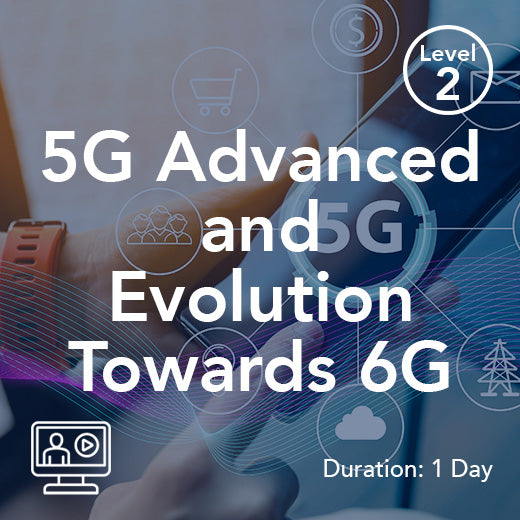
5G Advanced and Evolution Towards 6G
This 5G Advanced and Evolution Towards 6G course delves into 5G Advanced and its role as a stepping stone to the groundbreaking 6G era. You'll explore how 5G is being enhanced to deliver even higher speeds, lower latency, and greater capacity. We'll dissect key features and advancements that are laying the groundwork for the future of connectivity. Beyond 5G, the course will provide a glimpse into the potential of 6G, examining emerging technologies and their implications for industries and society. The course provides a holistic overview of the current (relatively early) state of play of 6G development. We develop crucial insights into 6G design, performance objectives, and its intersection with the metaverse and AI, ensuring participants are well-prepared for the future of wireless communication. By the end of this course, you'll gain a comprehensive understanding of the latestdevelopments in mobile network technology and the exciting possibilities they hold. Who Would Benefit Although this course is open to all, it is recommended that you have prior experience in telecommunications. Course Contents 5G Advanced - Base Capabilities Improvements Specific 5G Advanced Features 6G – a Look Ahead
POA: Closed Course
-
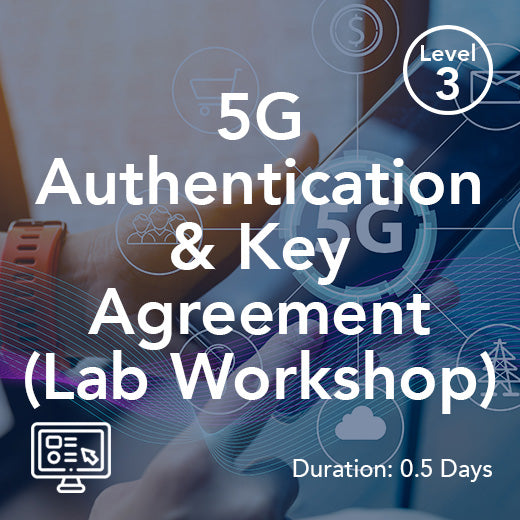
5G Authentication and Key Agreement (Lab Workshop)
This lab enables you to explore the 5G Authentication & Key Agreement procedure with our 1/2-day lab including ciphering key and integrity key generation The cloud-based lab provides participants with access to a fully emulated 5G System environment. Experiment with the configurations for various Network Functions within the 5G Core Network and build customized settings for signalling scenarios that will enable users to develop greater insight in to the operation of the 5G System. 5G Authentication & Key Agreement Examine the 5G AKA procedure including ciphering key and integrity key generation AMF/SEAF signalling towards AUSF using HTTPv2 protocol Usage of SIDF in UDM ARPF and its usage for creation of Authentication Vector Lab Features & Benefits Through a combination of hands-on experience and guided instruction our virtual labs allow users to explore signalling procedures in the 5G system. Our labs feature: A simulated 5G network - Provides hands-on experience and reinforces theoretical knowledge. Guided exercises for signalling scenarios - makes learning and applying new concepts straightforward. Wireshark (pcap) output files – detailed output files provide deep system insight. Cloud-based lab - available 24/7 on any connected device. Individual dedicate server - Ensures that your work is kept private and secure. Ongoing trainer support - ensures you get expert advice when needed. Full integration with Wray Castles training programmes - allows you to build bespoke learning pathways for specialist teams across your organisation. You can find more information on our labs and arranges a demo here.
POA: Closed Course
-
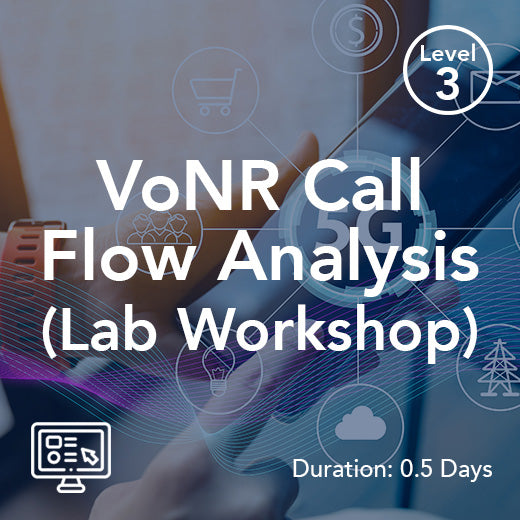
VoNR Call Flow Analysis (Lab Workshop)
Develop a deep understanding VoNR Call Flow and understand its role in the 5G Standalone Network with this 1/2-day Lab. The cloud-based lab provides participants with access to a fully emulated 5G System environment. Experiment with the configurations for various Network Functions within the 5G Core Network and build customized settings for signalling scenarios that will enable users to develop greater insight in to the operation of the 5G System. VoNR Call Flow Analysis Covering Voice over New Radio in a 5G SA network, it includes message flows for: Registration PDU session setup IMS and SIP signalling for VoNR Lab Features & Benefits Through a combination of hands-on experience and guided instruction our virtual labs allow users to explore signalling procedures in the 5G system. Our labs feature: A simulated 5G network - Provides hands-on experience and reinforces theoretical knowledge. Guided exercises for signalling scenarios - makes learning and applying new concepts straightforward. Wireshark (pcap) output files – detailed output files provide deep system insight. Cloud-based lab - available 24/7 on any connected device. Individual dedicate server - Ensures that your work is kept private and secure. Ongoing trainer support - ensures you get expert advice when needed. Full integration with Wray Castles training programmes - allows you to build bespoke learning pathways for specialist teams across your organisation. You can find more information on our labs and arranges a demo here.
POA: Closed Course
-
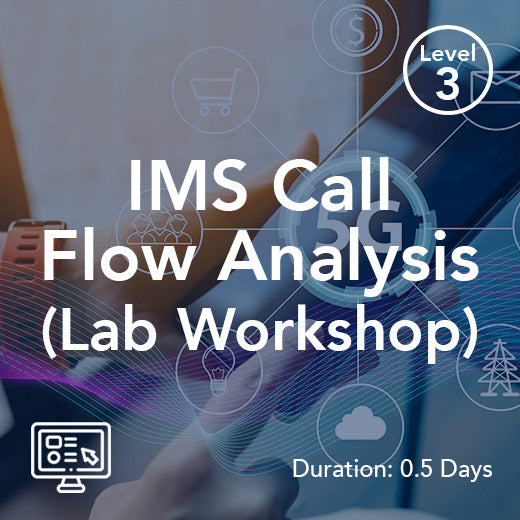
IMS Call Flow Analysis (Lab Workshop)
Examine details of IMS Call Flow Analysis with focuses on IMS Registration and Invitation procedures with our 1/2-Day Virtual Lab. The cloud-based lab provides participants with access to a fully emulated 5G System environment. Experiment with the configurations for various Network Functions within the 5G Core Network and build customized settings for signalling scenarios that will enable users to develop greater insight in to the operation of the 5G System. IMS Call Flow Analysis Focuses on IMS Registration and Invitation procedures includes: SIP routing within the IMS domain Detailed information about SDP for IMS Session setup Lab Features & Benefits Through a combination of hands-on experience and guided instruction our virtual labs allow users to explore signalling procedures in the 5G system. Our labs feature: A simulated 5G network - Provides hands-on experience and reinforces theoretical knowledge. Guided exercises for signalling scenarios - makes learning and applying new concepts straightforward. Wireshark (pcap) output files – detailed output files provide deep system insight. Cloud-based lab - available 24/7 on any connected device. Individual dedicate server - Ensures that your work is kept private and secure. Ongoing trainer support - ensures you get expert advice when needed. Full integration with Wray Castles training programmes - allows you to build bespoke learning pathways for specialist teams across your organisation. You can find more information on our labs and arranges a demo here.
POA: Closed Course
-

AF Influence on Traffic Routing (Lab Workshop)
The Lab allows you to analyse, test and understand the Influencing Traffic-Routing initiated by an AF and the details of traffic routing to develop a deep understanding of the protocols involved. The cloud-based lab provides participants with access to a fully emulated 5G System environment. Experiment with the configurations for various Network Functions within the 5G Core Network and build customized settings for signalling scenarios that will enable users to develop greater insight in to the operation of the 5G System. AF Influence on Traffic Routing Message Flow Explore the Influencing Traffic-Routing initiated by an AF and the intricacies of traffic routing to develop a comprehensive understanding of the protocols involved: AF/P-CSCF PCF and SM Policy Control Analyses of the SMF behaviour Signalling done by HTTPv2 and PFCP protocols. Lab Features & Benefits Through a combination of hands-on experience and guided instruction our virtual labs allow users to explore signalling procedures in the 5G system. Our labs feature: A simulated 5G network - Provides hands-on experience and reinforces theoretical knowledge. Guided exercises for signalling scenarios - makes learning and applying new concepts straightforward. Wireshark (pcap) output files – detailed output files provide deep system insight. Cloud-based lab - available 24/7 on any connected device. Individual dedicate server - Ensures that your work is kept private and secure. Ongoing trainer support - ensures you get expert advice when needed. Full integration with Wray Castles training programmes - allows you to build bespoke learning pathways for specialist teams across your organisation. You can find more information on our labs and arranges a demo here.
POA: Closed Course
-

5G/6G Essential Protocols and Procedures (Training & IEEE Innovation Testbed)
Transformative Training Powered by IEEE and Wray Castle Powered by the joint expertise of IEEE and Wray Castle, the 5G/6G Essential Protocols & Procedures Training and Innovation Testbed offers a comprehensive exploration of 5G’s most crucial protocols and procedures. This cutting-edge course blends robust theory with hands-on practice via the IEEE 5G/6G Innovation Testbed - a secure, cloud-based platform providing end-to-end 5G network testing capabilities. The Key Protocols & Procedures Putting Theory Immediately into Practice 5G Registration Process - Identities, Authentication, Subscriber Data Network Functions & Interactions - UDM, UDR, PCF, AMF, SMF, UPF PDU Session Establishment - End-to-End signaling and network slicing PFCP & N4 Signaling -Policy and Session Management in 5G Specifically designed for: System engineers and integrators Engineers working with operation, optimization, and troubleshooting Technical professionals responsible for 5G System signaling
£1,045.00
-
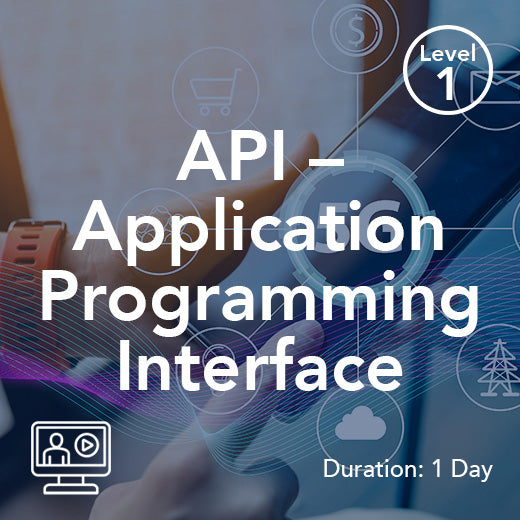
API – Application Programming Interface
Those needing to understand the definition of APIs and its usage in Web Services and 5G Core Network. Prerequisites Some knowledge or experience of packet-switched data network operation and Internet technology is beneficial. General knowledge about 4G and 5G. Course Contents Introduction to API API Standards and Definition API and Web Services 3GPP and 5G APIs 5G Service Based Architecture (SBI) Course Director: Maziar Shoaie Maziar is a seasoned telecommunications trainer with over 23 years of experience. He has delivered courses in more than 45 countries to customers from all over the world, including operators, vendors, and integrators. He is a core-network specialist with expertise in 2G, 3G, 4G, and 5G networks. and the developer of the Wray Castle 5G Lab and Workshop.
£980.00
-

Wireless Systems for Industrial Applications – Industry 4.0 (LS telcom)
In nearly every factory floor and industrial setting, communication links are used to carry vital information between machinery and to control and monitor devices. From periodic updates to ongoing process and manufacturing management timely delivery without failure is critical to operations. Cabled systems can be very expensive and tether equipment to fixed locations, reducing flexibility in equipment placement and reorganization. Turning to wireless technology addresses the cabling drawbacks butrequires careful examination of transmission, operational and propagation characteristics to achieve the required performance. A solid understanding of the possibilities and limitations of current radio technologies (including 5G), deployment scenarios and spectrum availability is therefore essential for the successful introduction of wireless systems for automation. This course describes technologies and concepts for wireless communication for industrial applications. It considers the operational requirements, specific RF propagation characteristics, available frequency bands, compatibility issues and develops appropriate design strategies. An overview and comparison of appropriate wireless technologies for industrial applications will complete the training. Course Objectives After completing the course, delegates will understand the requirements and limitations of radio systems for industrial applications. They will know the physical and regulatory constraints of the radio environment and understand the procedures for system planning. Intended for This course is intended for those who have basic knowledge in radio communication systems, who are interested in wireless systems for industrial applications and who may be responsible for radio systems in industry. Contents Introduction: the wireless landscape Industrial requirements Spectrum for wireless automation Radio propagation in industrial environment Wireless network system design criteria and system selection Radio systems for wireless automation Compatibility issues About LS telcom: LS telcom is a global leader in technologies and consulting services for efficient radio spectrum use, optimizing spectrum management to ensure reliable, interference-free, and secure radio services. Our portfolio includes consulting, measurement services, and integrated solutions for planning, analysis, monitoring, and managing radio infrastructure. Serving customers in over 100 countries, including regulatory authorities, network operators, and industries such as transport, utilities, and security, LS telcom operates globally with subsidiaries and offices in locations like Germany, the UK, Canada, India, and the UAE. Headquartered in Lichtenau, Germany, LS telcom AG has been listed on the German Stock Exchange since 2001 (ISIN DE 0005754402).
£690.00
-
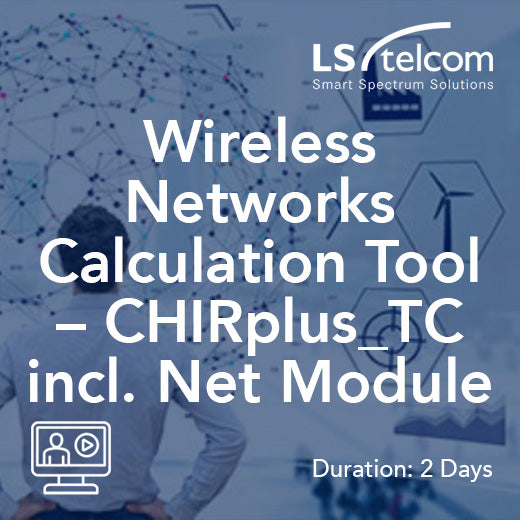
Wireless Networks Calculation Tool – CHIRplus_TC incl. Net Module (LS telcom)
The design of wireless networks considering mobile technologies such as mobile, TETRA, DMR, PMR or wireless IoT (Internet of Things) technologies (e.g. LoRaTM) requires complex calculations to dimension link capacity and link availability and to perform frequency assignment. Planning software like LS telcom’s CHIRplus_TC provides the required functionality in a user-friendly way and are essential for proper network design. A thorough knowledge of the available functionality and understanding of calculation results considerable shortens planning time and results in optimized network performance. The seminar introduces essential features to perform planning tasks for wireless networks systems. The first day is dedicated to the general tool handling. The different database functions and configurations are presented and discussed with the delegates. The following day will cover the necessary steps to perform typical wireless network calculations - from data input over the setting of required parameters to the calculationsanalyses. Finally, reports and data export options will be presented. An overview of the network technologies included in the Net Module will be introduced. The course is presented as classroom training with tool-based exercises to be done by the delegates. After a very short introduction with a few theory slides, the seminar will mostly focus on the topics by corresponding examples shown by the trainer and following dedicated exercises that are carried out by the delegates. Course Objectives After the training the delegates will be able to efficiently perform advanced network design and planning tasks using CHIRplus_TC. They will learn how to get best use on well-established engineering procedures and algorithms for wireless networks. Intended for This course is intended for those who have a basic knowledge in radio communication, who are interested in the functionality provided by CHIRplus_TC and who may be employed in telecoms regulators, telecoms operators, and utility and transportation companies. Contents Setup and configuration of CHIRplus_TC Interaction with the Graphical User Interface (GUI) Usage of databases and spreadsheets (especially filtering) Path profile and line of sight Net Module: Overview of network technologies Standardized data import and export Reports and documentation About LS telcom: LS telcom is a global leader in technologies and consulting services for efficient radio spectrum use, optimizing spectrum management to ensure reliable, interference-free, and secure radio services. Our portfolio includes consulting, measurement services, and integrated solutions for planning, analysis, monitoring, and managing radio infrastructure. Serving customers in over 100 countries, including regulatory authorities, network operators, and industries such as transport, utilities, and security, LS telcom operates globally with subsidiaries and offices in locations like Germany, the UK, Canada, India, and the UAE. Headquartered in Lichtenau, Germany, LS telcom AG has been listed on the German Stock Exchange since 2001 (ISIN DE 0005754402).
£1,300.00
-
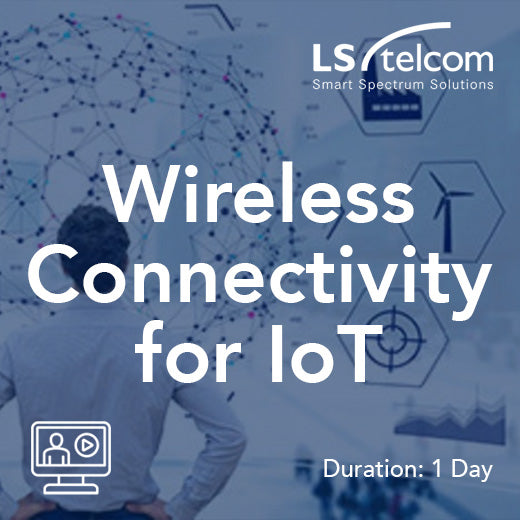
Wireless Connectivity for the Internet of Things (IoT) (LS telcom)
The Internet of Things (IoT) covers a huge range of use cases and applications and scales from single devices to massive systems with various elements connecting in real time. Wireless connectivity is an integral part of IoT. Depending on the application, factors such as range, data requirements, security, power requirements and battery life will dictate the choice of one or some form of combination of wireless technologies. Traditional cellular mobile networks based on 2G/3G/4G have almost ubiquitous coverage and high data rates but at cost of high power requirements at end user devices. Low Power Wide Area Networks (LPWAN) based on standards like LoRaWAN, Ultra Narrow Band (UNB) or NB-IoT, are expected to complement traditional connectivity solutions for long range communication. Short range technologies such as Bluetooth, BLE, ZigBee, WiFi or RFID will provide connectivity over short distances. And, of course, 5G presents another set of opportunities for IoT connectivity. This course explores radio technologies for IoT applications; discusses the underlying concepts and the resulting advantages and limitations. An analysis of spectrum requirements and availability complements the training. Course Objectives After completing the training, participants will be familiar with most recent radio technologies available to power IoT applications. They will understand the differences between the technologies, and the benefits and compromises of each. Intended for This course is intended for those who have basic knowledge in radio communication systems, who are interested in wireless systems for IoT applications and who may be responsible for implementing radio systems in industry. Contents IoT applications and communication requirements Overview on wireless technologies and approaches for IoT applications Spectrum requirements and availability Radio systems for Low Power Wide Area Networks Radio systems for Low Power Personal Area Networks 3GPP systems and the role of 5G for IoT About LS telcom: LS telcom is a global leader in technologies and consulting services for efficient radio spectrum use, optimizing spectrum management to ensure reliable, interference-free, and secure radio services. Our portfolio includes consulting, measurement services, and integrated solutions for planning, analysis, monitoring, and managing radio infrastructure. Serving customers in over 100 countries, including regulatory authorities, network operators, and industries such as transport, utilities, and security, LS telcom operates globally with subsidiaries and offices in locations like Germany, the UK, Canada, India, and the UAE. Headquartered in Lichtenau, Germany, LS telcom AG has been listed on the German Stock Exchange since 2001 (ISIN DE 0005754402).
£690.00
-
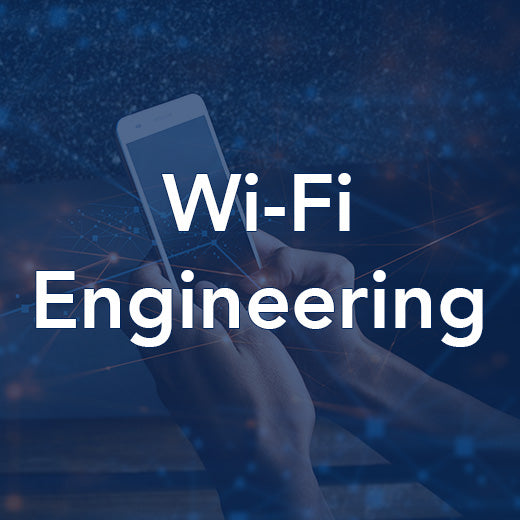
Wi-Fi Engineering Overview (On-Demand)
Course Code: WR1501 Course Summary This course presents an overview of the 802.11 family of wireless LAN technologies that are more commonly known as Wi-Fi. The course introduces the various forms of Wi-Fi currently in use and looks in detail at the structure, operation and functionality of Wi-Fi connections. It then examines the security mechanisms required to protect a Wi-Fi network. Consideration is also given to identifying common Wi-Fi problems and how to correct those issues in a Wi-Fi network. Who would benefit This course is suitable for communications professionals that will engaged in Wi-Fi network design and administration, and also those involved in deploying and maintaining Wi-Fi-based systems. Prerequisites Delegates should ideally have a background in telecommunications or Information Technology with an interest in technology. Topic Areas Include Wireless LAN Technologies and Standards 802.11 PHY MAC Frame Structures MAC Procedures Security Wi-Fi Troubleshooting On-Demand Online Training Our self-paced on-demand distance learning programmes are accessible on any computer, tablet or smartphone and allow you to study at a time and location that is convenient to you. Each course includes: Illustrated Course Books - featuring leading edge knowledge from subject matter experts. Videos - Detailed videos expand the points covered in the course books, discussing topics in greater depth. Tutor Support – Dedicated course tutors are available to answer any questions you might have throughout your studies. Formative Assessment - Modules include regular quizzes to support learning by testing your knowledge of the subject matter. Certification– Successfully complete the end of module tests to earn Digital Badges to demonstrate the depth of your knowledge of the topic.
£1,815.00
-

Wi-Fi Engineering Overview
Course Code: WR1501 Course Summary This course presents an overview of the 802.11 family of wireless LAN technologies that are more commonly known as Wi-Fi. The course introduces the various forms of Wi-Fi currently in use and looks in detail at the structure, operation and functionality of Wi-Fi connections. It then examines the security mechanisms required to protect a Wi-Fi network. Consideration is also given to identifying common Wi-Fi problems and how to correct those issues in a Wi-Fi network. Who would benefit This course is suitable for communications professionals that will engaged in Wi-Fi network design and administration, and also those involved in deploying and maintaining Wi-Fi-based systems. Prerequisites Delegates should ideally have a background in telecommunications or Information Technology with an interest in technology. Topic Areas Include Wireless LAN Technologies and Standards 802.11 PHY MAC Frame Structures MAC Procedures Security Wi-Fi Troubleshooting
POA: Closed Course
-
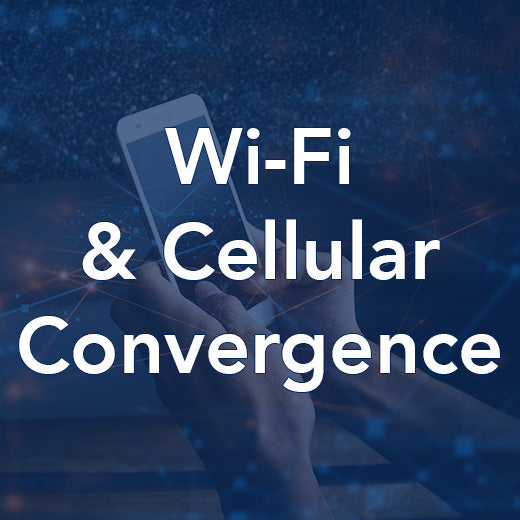
Wi-Fi and Cellular Convergence
Course Code: WR1401 Course Summary This course presents an overview of the 802.11 family of wireless LAN technologies that are more commonly known as Wi-Fi. The course introduces the various forms of Wi-Fi currently in use and looks in detail at the structure, operation and functionality of Wi-Fi connections. It then examines issues related to the integration of Wi-Fi access into cellular provider’s portfolios and techniques that allow interworking between the access environments. Who would benefit This course is suitable for communications professionals involved in Wi-Fi network design and administration, and also those involved in deploying and maintaining Wi-Fi based systems. Prerequisites Delegates should ideally have an understanding of cellular networks and a keen interest in understanding Wi-Fi technologies. Topic Areas Include Wireless LAN Technologies and Standards The Protocol Stack Layer 1 The Protocol Stack Layer 2 Wi-Fi Security Wi-Fi Deployment and Integration
POA: Closed Course
-
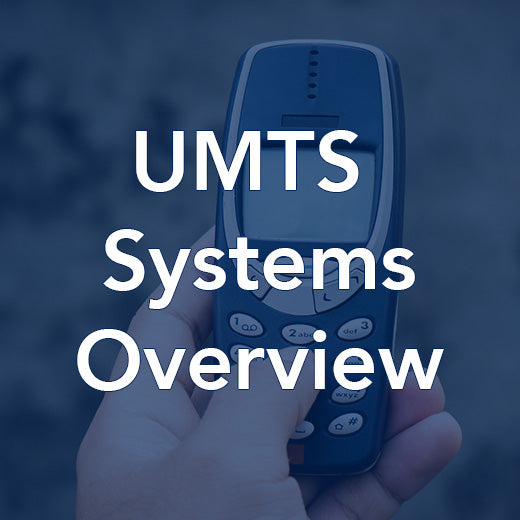
UMTS System Overview
Course Code: MB350 Course Summary The Universal Mobile Telecommunications System (UMTS) is a very complex technology that is described in tens of thousands of pages of technical specifications. Wray Castle has distilled this information into a two-day, high-level focused learning experience that will significantly shorten the learning curve for understanding this technology. Who would benefit Those requiring a technical introduction to the UMTS network, its architecture, capabilities and operations including how it interworks with other networks. Prerequisites An appreciation of 2G network operation and services and an ability to comprehend technical information is beneficial. Topic Areas Include UMTS evolution and 3G standardization 3G spectrum allocation UMTS services and service aims UMTS network architecture UMTS radio environment and system areas Asynchronous Transfer Mode (ATM) Core network operation The IP Multimedia Subsystem (IMS) CDMA operation and code types Power control and handover UMTS channels and air interface operation UMTS network procedures
POA: Closed Course
-
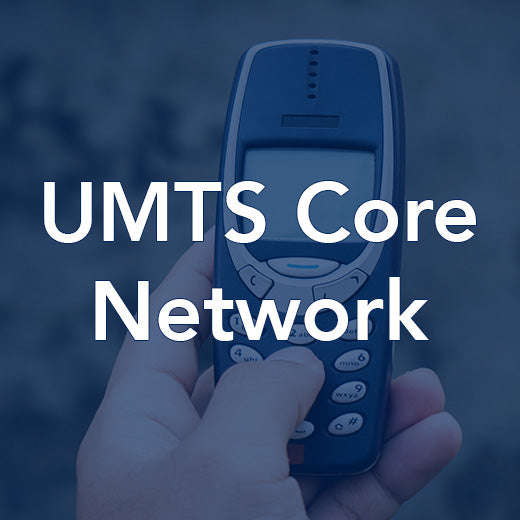
UMTS Core Network
Course Code: MB2004 Course Summary This course provides a clear and logically organized tour of the 3GPP UMTS circuit-switched and packet-switched core network domains. The course describes the operation of the main core network protocols and outlines the evolutionary path towards an all IP based network. The functions of the various interfaces are explained including those towards the Evolved Packet Core (EPC). References are made to the latest releases of 3GPP specifications throughout the course. Who would benefit Those requiring a comprehensive understanding of UMTS core network architecture, interfaces, protocols and operation, including the Release 4 circuit switched core network, the packet switched core network, associated functions such as security, charging, signalling protocols and location based services. Prerequisites Familiarity with the architecture and general operation of a UMTS network is beneficial. Some knowledge of IP and the OSI seven-layer model will also be advantageous. Topic Areas Include UMTS core network architectures Asynchronous Transfer Mode (ATM) RANAP Iu protocol Circuit-switched core network procedures Packet-switched core network functionality Mobility management Interworking with 2G, 4G and WLAN Multimedia Messaging Service (MMS) IN and CAMEL Location Services (LCS) Security functions Charging Evolution to the Evolved Packet Core (EPC)
POA: Closed Course
-
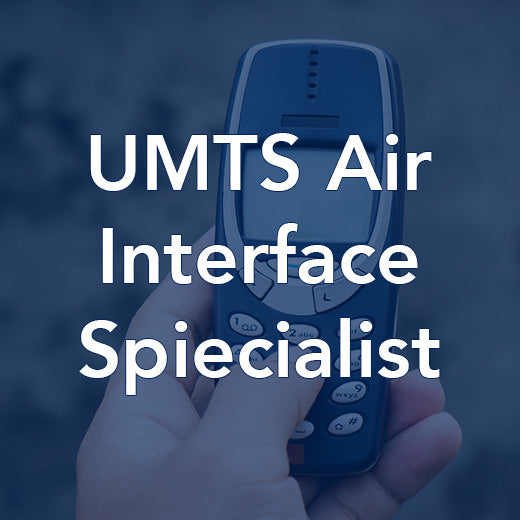
UMTS Air Interface Specialist Workshop
Course Code: MB1301 Who Would Benefit Senior technical personnel involved in planning, designing or supporting the UMTS air interface environment. Prerequisites Attendance on this course assumes previous attendance on the UMTS Air Interface Live-on-Web course or equivalent knowledge. Contents The CDMA Receiver CDMA Code Functions Physical Layer Functions High Speed Packet Access (HSPA)
POA: Closed Course
-
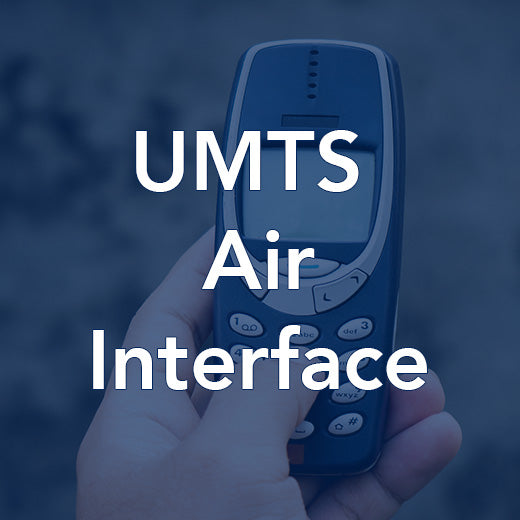
UMTS Air Interface
Course Code: MB2002 Course Summary This course provides a comprehensive technical overview of the structure and operation of the UMTS air interface protocol stack. Who would benefit Those requiring a comprehensive technical overview of the structure and operation of the UMTS air interface protocol stack from layers 1 to 3. Prerequisites This course is technical in nature and assumes some knowledge of the UMTS network and its operation, or previous attendance on the UMTS System Overview course (MB350). Topic Areas Include Aims of a UMTS network Principles of spread spectrum technology Principles of CDMA and the use of codes UMTS air interface protocol structure Overview of UTRAN protocols Functions of Layer 1 Analysis of physical channels Power control Layer 2 protocols – RLC, MAC and PDCP Layer 3 protocol – RRC Synchronization and idle mode activities Network access and radio network identities Connected mode activities Handover scenarios Transmit diversity Security and error protection
POA: Closed Course
-

UIC Rail Academy: Telecoms Collection
The comprehensive UIC Rail Academy: Telecoms Collections includes a wide range of training programmes covering the technologies key to the future of rail communications systems. Our proven platform combined with our Gold Standard training material covering the major rail communications systems (incl. GSM-R, ERTMS/ETCS and FRMCS) and underlying telecoms technologies effectively enables knowledge transfer and upskills staff across an organisation. The Telecoms Collection helps address the skills gap and delivers effective integrated training programmes that truly engage employees in their development, whether it’s new starters, identified talent, or experienced engineers. What’s included? Enrol in the UIC Rail Academy: Telecoms Collection and you'll have access to the following learning resources. The Critical Communications & Infrastructure Programme (Railway Sector) Extended Telecoms Learning Instructor-Led Live Online Training Foundation Courses Telecoms Foundation 2G to 5G Mobile Communications Radio Principles Rail Radio Communications GSM-R Engineering Overview ERTMS / ETCS for Radio Engineering FRMCS Engineering Courses 2G to 5G Mobile Technologies 5G Engineering Overview GSM Air Interface Introduction to Radio Microwave Link Planning Courses FRMCS Overview FRMCS Engineering Delivery Method: On-Demand Online Delivery Method: On-Demand Online Delivery Method: Live Online (Contact us for the training schedule) Licensing Options The UIC Rail Academy: Telecoms Collection is available from single user licences to enterprise-wide licenses making it a cost effected way to upskill your organisation. Users Single Team (2-4) Enterprise (5+) Price/User €5,950 £4,695 POA For more information email uicacademy@wraycastle.com
£5,090.00
-

TowerCo Master Services Agreements (MSA)
A concise course on interpreting TowerCo Master Services Agreements, focusing on telecommunications industry contracts. While this course is not a substitute for legal advice, it will empower you to understand and navigate these complex agreements, covering topics from the importance of contracts to verifying agreement accuracy, contract validity, proactive contract management, and an in-depth exploration of typical contract sections. By the end of this course, you'll be equipped to make informed decisions and safeguard your organisation's interests. Course Contents: Contractual fundamentals Jargon buster approach Cellsite outsourcing in context Importance of proactive contract management to avoid costly disputes Generic form of a TowerCo Master Services Agreement Authority Matrixes
POA: Closed Course
-
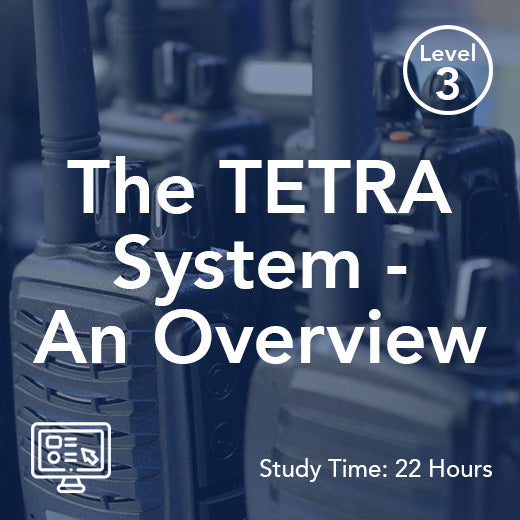
The TETRA System - An Overview (On-Demand)
Course Code: TR1701 Course Summary This course provides a technical overview of the TETRA system – both Trunked Mode Operation (TMO) and Direct Mode Operation (DMO). The course commences with a look at the ETSI technical specifications that define TETRA and the general requirements of users of Professional Mobile Systems. The course moves on to examine the range of services that TETRA is capable of delivering, and the network elements, architecture and functionality required to deliver these services. The air interface structure and associated protocol stack are then explained in some detail, along with mobility management procedures such as cell selection and re-selection. The philosophy of trunked radio networks is also explored, and the benefits of trunking are explained, along with a look at capacity planning. The course finishes with an explanation of the steps taken to make the air interface as secure as possible – including authentication and encryption. This course is an ideal foundation for further study as it provides a solid understanding of TETRA, whilst also highlighting the flexibility and sophistication of this technology. Who would benefit Those working or involved in PMR or PAMR who need to understand TETRA technology, specification and capabilities. Prerequisites Familiarity with the architecture and general operation of typical VHF or UHF mobile networks is advantageous, and some understanding of radio techniques is useful. Topic Areas Include: Introduction to TETRA TETRA Services TETRA Network Components TETRA Network Architecture and Functionality Air Interface Radio Procedures TETRA System Capacity Direct Mode Operation (DMO) Security Aspects of TETRA On-Demand Online Training Our self-paced on-demand distance learning programmes are accessible on any computer, tablet or smartphone and allow you to study at a time and location that is convenient to you. Each course includes: Illustrated Course Books - featuring leading edge knowledge from subject matter experts. Videos - Detailed videos expand the points covered in the course books, discussing topics in greater depth. Tutor Support – Dedicated course tutors are available to answer any questions you might have throughout your studies. Formative Assessment - Modules include regular quizzes to support learning by testing your knowledge of the subject matter. Certification– Successfully complete the end of module tests to earn Digital Badges to demonstrate the depth of your knowledge of the topic. Also available as a Live Online Training Programme, learn more.
£1,815.00
-

The Critical Communications & Infrastructure Programme (Railway Sector)
Duration: 24 Months Modern Rail networks rely on efficient and resilient communications networks, without which rail networks cannot operate safely. The demand for up-to-date technical skills for those involved in maintaining and developing transport communications systems continues to grow. The Critical Communications and Infrastructure Programme (Railway Sector) is a comprehensive programme designed to equip professionals in the rail industry with the essential knowledge and skills to excel in their roles. The programme aims to provide participants with a holistic understanding of rail radio communication technologies, strategic insights, and practical skills to navigate the complexities of the ecosystem. This programme has been assured by City & Guilds. Assured status provides validation and recognition for the learner. It is a symbol of learning excellence and quality and is a reassurance that the training undertaken meets best practice standards. Each complete self-paced on-demand distance learning course includes an extensive blend of core reading materials, video resources, quizzes and a dedicated Instructor. All in a modern, intuitive and secure cross-device Virtual Learning Environment. Programme Format Foundation Courses Introduction to Telecoms 2G to 5G Mobile Technologies Radio Principles Specialist Courses: GSM-R Engineering Overview ERTMS/ETCS for Radio Engineers FRMCS Engineering Who would benefit? The Critical Communications and Infrastructure Programme (Railway Sector) would benefit those working in the rail industry with a responsibility for planning, building, maintaining and optimising the rail communications networks of today and tomorrow. Rigorous testing, regular digital badging and certification ensures that successful students are able to demonstrate the breadth and depth of their knowledge. What sets the programmes apart? Focused Learning Pathways – guide you through the material and enable you to become an expert in your chosen field. Flexible Learning – study at a time, location and pace of your choice, allowing you to fit your study into your schedule. Full Tutor Support – from industry experts with decades of experience throughout your studies. 24 months access –access to the all the training materials for 2 years, allowing you to refer back to the material after your studies. Regular Testing and Digital Badges – allow you to demonstrate the depth of your knowledge End of Programme Certificate – students successfully completing the programme are issued with a certificate complete with a grade transcript. Developed and Certified by Wray Castle – the leading supplier of training the global telecoms industry. For purchase of multiple seats, please contact us at uicacaedmy@wraycastle.com
£4,085.00
-
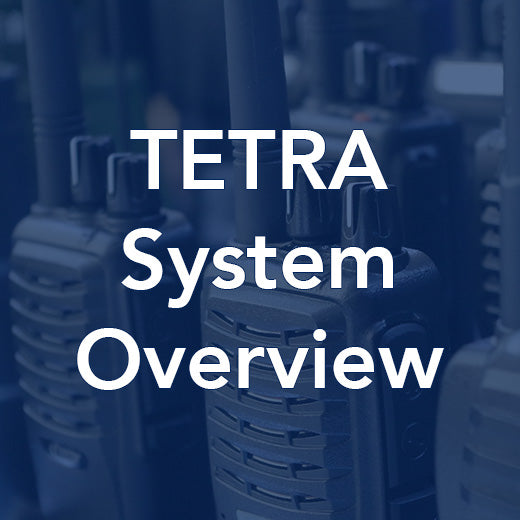
TETRA System Overview
Course Code: TR1302 Course Summary All aspects of a TETRA system are described including the TETRA 1 and TETRA 2 standards. The course introduces trunking principles, service aspects, network planning and architecture. Technical details about the TETRA radio interface are also examined. Who would benefit Those working or involved in PMR or PAMR who need to understand TETRA technology, specification and capabilities. Prerequisites Familiarity with the architecture and general operation of typical VHF or UHF mobile networks is advantageous, and some understanding of radio techniques is useful. Topic Areas Include An overview of the TETRA standards TETRA 2 Trunked radio principles Traffic analysis TETRA services and interfaces Cellular principles Network planning TETRA security TETRA frequency allocations TETRA channels Network architecture TETRA user terminals The TETRA radio interface TETRA mobility management Direct Mode Operation (DMO)
POA: Closed Course
-
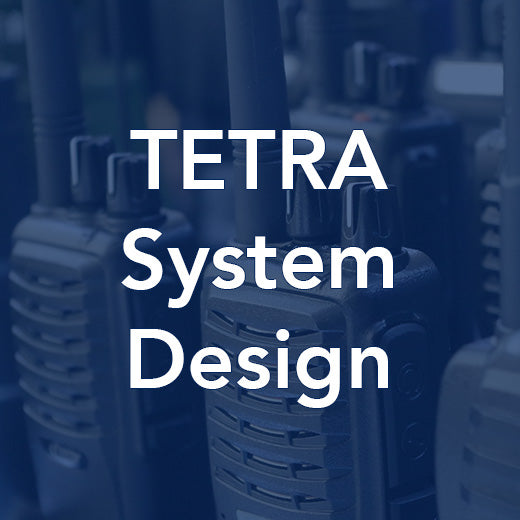
TETRA System Design
Course Code: TR1202 Course Summary The topics covered in this course will equip delegates with the knowledge to plan and configure TETRA networks. Who would benefit Engineers working or involved in radio system design who require a detailed understanding of the planning, optimisation and configuration aspects of TETRA systems. Prerequisites Familiarity with the principles and techniques of designing a mobile radio system, or previous attendance on the Radio System Design course (RP1101). Topic Areas Include TETRA air interface structure – sub-slots, time slots and bursts TETRA modulation and channel coding performance Static and dynamic receiver sensitivity Dynamic channel adaptation Adaptive power control mechanisms and procedures Synchronisation and network broadcast channels Radio usable, radio relinquishable and radio improvable Random access procedures Cell surveillance, monitoring and scanning Undeclared, unannounced and announced cell reselection C1, C2, C3, C4 and C5 calculations Concentric, conforming and non-conforming carriers Normal, extended and shared control Capacity planning – circuit switched, packet switched, and control Fleet mapping Message, transmission and quasi-transmission trunking Carrier sharing options Configuring TETRA timers and energy economy mode Planning TETRA radio coverage Includes a TETRA system coverage and capacity design exercise.
POA: Closed Course
-
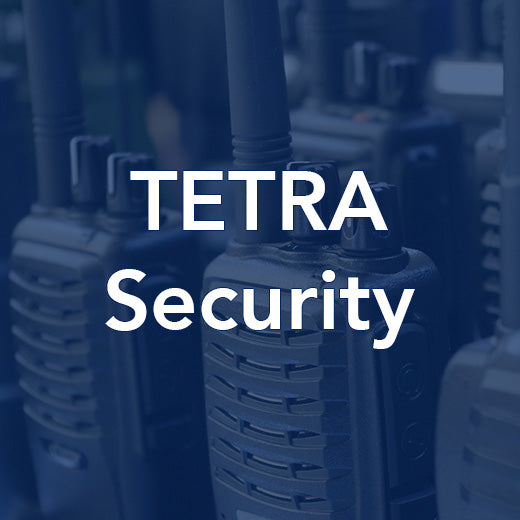
TETRA Security
Course Code: TR1301 Course Summary This course provides TETRA design, specification and system engineers with the necessary information and skills required to plan and configure the security services available on TETRA networks. Who would benefit Engineers and system administrators working or involved in secure system design for TETRA systems. Prerequisites Good understanding of TETRA radio system capabilities and target markets. Topic Areas Include Security fundamentals TETRA security classes DMO and V+D capabilities Integration of TETRA security to TETRA V+D and DMO capabilities TETRA attack vectors TETRA authentication TETRA confidentiality mechanisms Algorithms Initialization and maintenance of secured path OTAR protocols OTAR algorithms End-to-end security Privacy protection Legal framework
POA: Closed Course
-
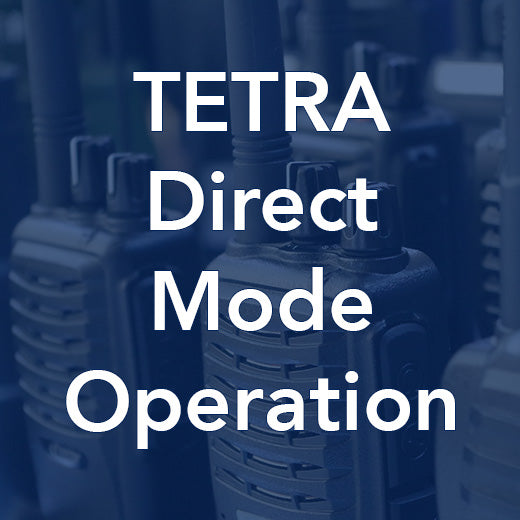
TETRA Direct Mode Operation
Course Code: TR1203 Course Summary The topics covered in this course will enable those working in TETRA systems administration, design and specification to plan and configure TETRA Direct Mode. Who would benefit Engineers working or involved in mobile radio system management and design who require a detailed understanding of the planning, optimisation and configuration aspects of TETRA Direct Mode Operation. Prerequisites Familiarity with the principles and techniques of designing mobile radio systems, or previous attendance on the Radio System Design course (RP1101). Topic Areas Include Introduction to TETRA DMO DMO air interface structure Advantages and disadvantages of DMO DMO services Frequency efficient operation Dual watch mobiles Dual mode mobiles DMO repeaters DMO gateways DMO gateway repeaters Radio coverage and co-existence issues Managed DMO DMO security Includes a DMO 'coverage' design exercise.
POA: Closed Course
-
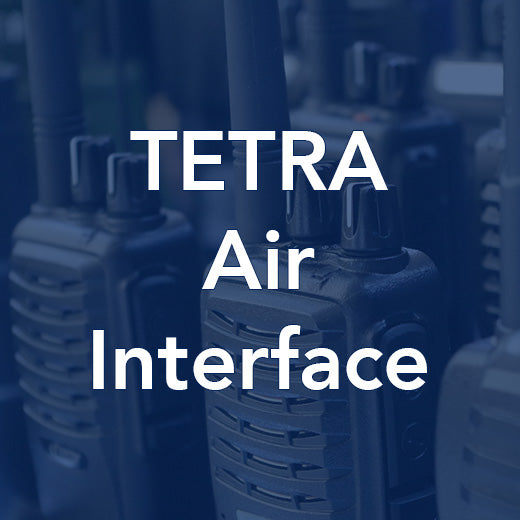
TETRA Air Interface
Course Code: MB2601 Course Summary This course provides a detailed description of the key aspects of the radio link between a TETRA mobile and a TETRA base station. V+D and Release 2 are covered in detail. The course includes higher-layer signalling, protocol interactions and media processing aspects as well as lower-layer functions such as modulation, radio performance and channel coding. Who would benefit Those working or involved in PMR or PAMR requiring a detailed understanding of the TETRA air interface. Prerequisites Familiarity with the architecture and general operation of a TETRA network, or previous attendance on the TETRA System Overview course (TR1302). Topic Areas Include TETRA identities TETRA bearer services, teleservices and supplementary services TETRA air interface protocol stack TETRA frequency allocation TETRA channels TETRA modulation schemes - inc. π/4DQPSK and QAM Medium Access Control (MAC) layer Logical Link Control (LLC) layer Supplementary Service (SS) and Short Data Service (SDS) protocols TETRA Mobility Management (MM) protocol Authentication and ciphering TETRA Direct Mode Operation (DMO)
POA: Closed Course
-
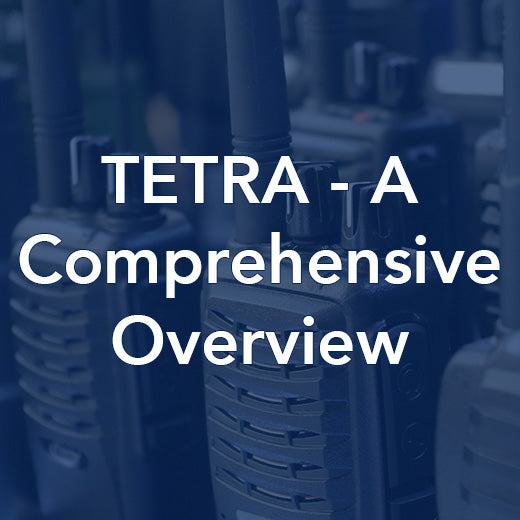
TETRA A Comprehensive Overview
Course Code: TR1201 Course Summary All aspects of a TETRA system are described including the TETRA 1 and TETRA 2 standards. The course introduces trunking principles, service aspects, network planning and architecture. Technical details about the TETRA radio interface are also examined. Who would benefit Those working or involved in PMR or PAMR who need to understand TETRA technology, specification and capabilities. Prerequisites Familiarity with the architecture and general operation of typical VHF or UHF mobile networks is advantageous, and some understanding of radio techniques is useful. Topic Areas Include An overview of the TETRA standards TETRA 2 Trunked radio principles Traffic analysis TETRA services and interfaces Cellular principles Network planning TETRA security TETRA frequency allocations TETRA channels Network architecture TETRA user terminals The TETRA radio interface TETRA mobility management Direct Mode Operation (DMO)
POA: Closed Course
-
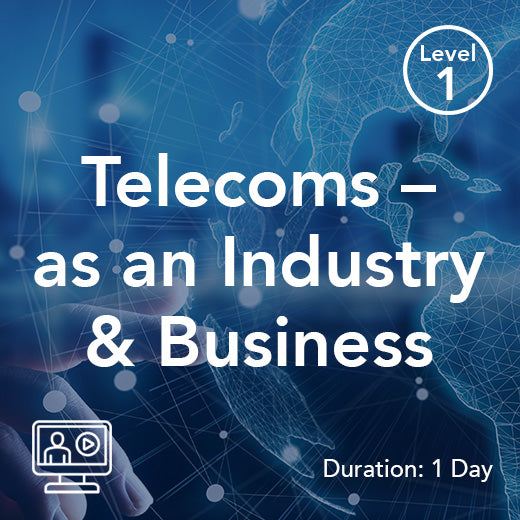
Telecoms – as an Industry and Business
The Telecoms Industry is based on a range of technologies that are extremely diverse, wide ranging, and highly complex. With this foundation, the industry is able to support a wide variety of service propositions in a significant number of identifiable sectors, and as a result, a vast array of business models. The complex business ecosystems are comprised of many thousands of companies and the relationships that exist between them. This includes Communications Service Providers (CSP), Network Equipment and Handset Vendors, Service / Support Companies, Standardisation Bodies, Regulators, and Content / Media Companies. The ecosystems are dynamic in nature and evolving rapidly in terms of focus. The sheer scale of it all makes it difficult to fully understand and analyse, but in this course, we start that process. We explore the overall make-up of the industry and the business dynamics; the types of organisations involved and their roles and relationships; the service propositions; and main customer segments. We also briefly consider company strategy and business models. An evaluation of the key technologies that support the industry is made, including projections, time-lines and overall market trajectories. Topic Areas Include: Telecoms Industry and Business Dynamics The Technology Explained and Evaluated Telecoms Industry and Market Update
POA: Closed Course
-

Telecoms Fundamentals (On-Demand)
This course has been designed for those who do not have a technical background and are new to the telecommunications industry or those who are currently working in the sector. The historical background to telecommunications is described and the technologies, abbreviations and techniques that are employed are explained. During the course, emphasis is placed on learning by group work, discussion and exercises that enhance the understanding of networks and their operation. Use of laptops, tablets and smartphones with Internet access are employed to explore emerging technologies in various areas. Videos and images of equipment and networks are used to explore the many applications of telecommunication in the modern world. Topic Areas Include Defining Telecoms and the Nature of Information A Historical Background to the Telecom Network Digital Fixed Telecom Networks Data Networks Mobile Networks and Wi-Fi Broadband and Emerging Network
£950.00
-
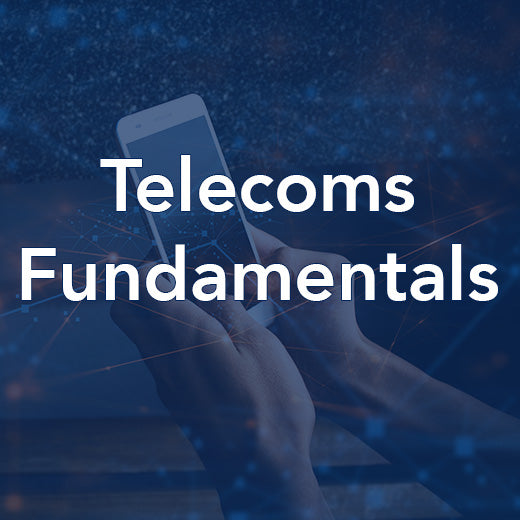
Telecoms Fundamentals
Course Code: WR1701 Course Summary This course has been designed for those who do not have a technical background and are new to the telecommunications industry or those who are currently working in the sector. The historical background to telecommunications is described and the technologies, abbreviations and techniques that are employed are explained. During the course, emphasis is placed on learning by group work, discussion and exercises that enhance the understanding of networks and their operation. Use of laptops, tablets and smartphones with Internet access are employed to explore emerging technologies in various areas. Videos and images of equipment and networks are used to explore the many applications of telecommunication in the modern world. Topic Areas Include Defining Telecoms and the Nature of Information A Historical Background to the Telecom Network Digital Fixed Telecom Networks Data Networks Mobile Networks and Wi-Fi Broadband and Emerging Networks
POA: Closed Course
-

Telecoms - Today and Tomorrow
Course Code: WR1402 Course Summary This intensive one-day workshop provides delegates with a clear understanding of the technologies available for use within communications networks. It considers how technologies have evolved and then considers fixed-line and mobile voice and data networks. The full range of broadband technologies is introduced both for fixed and mobile access. Who would benefit Those involved in the communications industry who require an understanding of the wide range of technologies used within a converged communications market such as: senior executives; managers; regulators; market analysts; marketeers and new recruits to the industry. Prerequisites This workshop is designed for those with no technical background. Topic Areas Include Basic operation of the Public Switched Telephone Network (PSTN) Comparison of circuit switching and packet switching techniques Principles of an Intelligent Network (IN) Opportunities provided by Value Added Services (VAS) Basic operation of mobile networks and features of an IP data network Quality of Service (QoS) in data networks Fixed broadband access technologies and mobile networks Principles of Next Generation Networks (NGN) Challenges of operating Voice over IP (VoIP) Evolution of fixed and mobile core networks The IP Multimedia Subsystem (IMS) Transmission technologies including PDH and SDH Developments in optical fibre techniques Operation of satellite telecommunication networks The Global Positioning System (GPS) Principles of broadcast radio and TV networks
£980.00
-

Technical Issues in Radio Spectrum Management (LS telcom)
At its heart, radio spectrum management is essentially a technical discipline, overlaid by strategic and economic considerations. One of the main technical goals of spectrum management is to control interference between radio users so as to optimize the use of the spectrum. Controlling interference is not straightforward and requires the balancing of many factors and undertaking this balancing act requires expert skills. This course describes the necessary theoretical, practical and physical qualities of the radio spectrum including the specifics of wave propagation. Following a review of technical fundamentals such as modulation, antennas and propagation modeling, the course considers the characteristics of different parts of the radio spectrum, and examines in detail the different uses to which it is put. The course then discusses why specific uses are often associated with particular radio frequencies and reviews the technical capabilities and limitations of today’s RF technologies. Interference mechanisms and coordination procedures are explored, together with an understanding of how the performance of radio equipment affects interference and coverage. Finally, detailed explanations of the specifics of the most common radio communication services including broadcast, land mobile, fixed and satellite services are given. Course Objectives After completing the course, participants will have a full understanding of the technical and physical issues which impact spectrum management. In addition, they will have deepened their technical knowledge of different radio services and will understand the principles behind controlling interference and the coordination procedures. Intended for This course is intended for those interested in the technical aspects of spectrum management. This includes those working in a technical function at regulators as well as in telecommunications and broadcasting companies and in organizations with a need for strong technical knowledge. Contents Communication principles, modulation techniques and antennas Radio wave propagation, terrain data and propagation calculations Characteristics and use of the radio spectrum from ELF to EHF Detailed exploration of a range of radio communication services: Technical characteristics, service planning Frequency assignment, coordination procedures About LS telcom: LS telcom is a global leader in technologies and consulting services for efficient radio spectrum use, optimizing spectrum management to ensure reliable, interference-free, and secure radio services. Our portfolio includes consulting, measurement services, and integrated solutions for planning, analysis, monitoring, and managing radio infrastructure. Serving customers in over 100 countries, including regulatory authorities, network operators, and industries such as transport, utilities, and security, LS telcom operates globally with subsidiaries and offices in locations like Germany, the UK, Canada, India, and the UAE. Headquartered in Lichtenau, Germany, LS telcom AG has been listed on the German Stock Exchange since 2001 (ISIN DE 0005754402).
£2,600.00
-
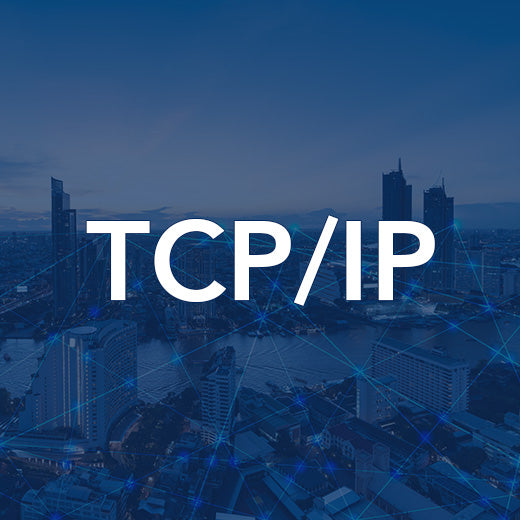
TCP/IP
Course Code: QS2501 Course Summary Knowledge of TCP/IP and its operation has become a fundamental requirement for anyone involved in IP networks. This detailed and exciting course takes delegates through TCP/IP principles, applications and protocols, enabling them to work confidently in this changing environment. Who would benefit This course is aimed at engineers who are looking to get started in TCP/IP family of protocols. The course is designed to provide engineers with a foundation into the world of IP and Ethernet in particular, although other major protocols such as MPLS will also be discussed. Prerequisites Some prior knowledge of packet-switched network operations and the Internet is beneficial, but the ability to comprehend technical matters and an interest in Internet protocols is sufficient. Topic Areas Include The Internet TCP/IP features Ethernet Spanning Tree Point-to-Point Protocol (PPP) Multi Protocol Label Switching (MPLS) Internet Protocol (IP) IP version 6 Address Resolution Protocol (ARP) Interior Gateway Protocols (IGP) Internet Control Messaging Protocol (ICMP) User Datagram Protocol (UDP) Transmission Control Protocol (TCP) Dynamic Host Configuration Protocol (DHCP) Domain Name System (DNS) Remote Authentication Dial In User Service (RADIUS)
POA: Closed Course
-

Strategy in Business (On-Demand)
Strategic decision-making is a key component of the vast majority of successful businesses, and the impact of those decisions is very likely to have a huge bearing on the success (or otherwise) of the organisation. Despite the intention that company strategy should drive and guide the mix of activities, and both focus and align efforts within appropriately configured units / departments, very few companies give it the time and attention needed to maximise the impact of good decision-making. This programme looks at each component of strategy in turn, with the decision-making process at the heart of a much more extensive set of activities need to maximise the impact of good strategy. We look at the nature of Strategy; building Awareness (industry, market, business dynamics, company-specific); strategic Analysis; strategy Development; strategy Execution; and key Performance Enablers. We draw all the relevant and varied information together, presenting it as a single flow of processes that can be used to drive successful strategy within any business, department or organisation. Who Would Benefit? These programmes deliver comprehensive training for employees at all levels within the organisation. They would benefit employees, mid-senior managers, directors, specialists, consultants and identified talent. Topics Covered: Understanding Strategy, Industry and Business Dynamics Understanding the Nature of Strategy Building Awareness Analysing the Market; Developing Strategy & Competitive Advantage, Strategy Execution, KPIS & OKRs Carrying Out Strategic Analysis Developing the Strategy Strategy Execution Key Performance Enablers
£95.00 £47.50
-

Strategy in Business
Strategic decision-making is a key component of the vast majority of successful businesses, and the impact of those decisions is very likely to have a huge bearing on the success (or otherwise) of the organisation. Despite the intention that company strategy should drive and guide the mix of activities, and both focus and align efforts within appropriately configured units / departments, very few companies give it the time and attention needed to maximise the impact of good decision-making. This programme looks at each component of strategy in turn, with the decision-making process at the heart of a much more extensive set of activities need to maximise the impact of good strategy. We look at the nature of Strategy; building Awareness (industry, market, business dynamics, company-specific); strategic Analysis; strategy Development; strategy Execution; and key Performance Enablers. We draw all the relevant and varied information together, presenting it as a single flow of processes that can be used to drive successful strategy within any business, department or organisation. Who Would Benefit? These programmes deliver comprehensive training for employees at all levels within the organisation. They would benefit employees, mid-senior managers, directors, specialists, consultants and identified talent. Prerequisites None Topics Covered: Understanding Strategy, Industry and Business Dynamics Understanding the Nature of Strategy Building Awareness Analysing the Market; Developing Strategy & Competitive Advantage, Strategy Execution, KPIS & OKRs Carrying Out Strategic Analysis Developing the Strategy Strategy Execution Key Performance Enablers
POA: Closed Course
-
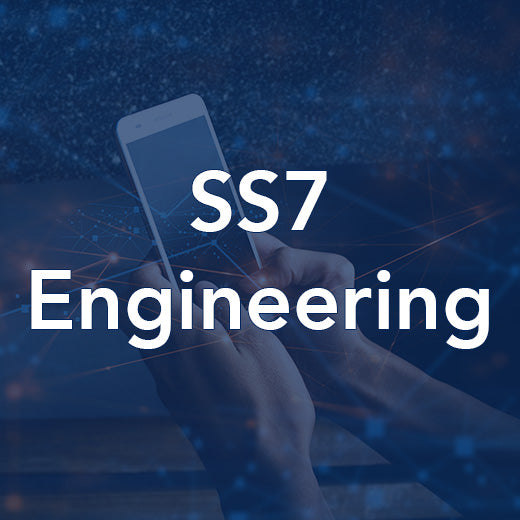
SS7 Engineering
Course Code: QS2500 Course Summary SS7 is a key element in the control plane of fixed and mobile networks and in Intelligent Network scenarios. It facilitates communication between SS7 hosted ‘applications’ enabling end-to-end service delivery. This course provides a comprehensive description of SS7 protocols, functions and procedures. Who would benefit Those who need a detailed understanding of the implementation and functions of SS7. Prerequisites An understanding of the PSTN architecture and circuit- and packet-switched concepts, together with a working knowledge of the OSI Model and primary rate (E1/T1) bearers. Topic Areas Include Overview of signalling and signalling system SS7 architecture: SP, STPs, Links, Link Sets, Routes and Route Sets Point Codes functions and formats Message Transfer Part (MTP) levels 1, 2 and 3 MTP error control, routing and loadsharing principles and user identification The ISDN User Part call control and supplementary services Signalling Connection Control Part (SCCP) functions and services SCCP connectionless and connection-oriented services applications SCCP Global Title routing and segmentation function Transaction Capabilities (TCAP) protocol stack and usage scenarios TCAP Component Sublayer and Transaction Sublayer Component-handling and transaction-handling functions and procedures The Dialogue Portion and application context negotiation SS7 applications in Intelligent Networks and Mobile Networks Introduction to SS7 over IP Includes practical exercises analysing MTP, SCCP, ISUP and TCAP signalling traces.
POA: Closed Course
-
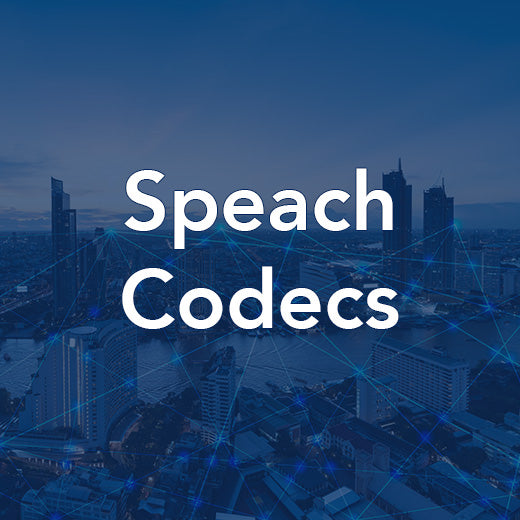
Speech Codecs
Course Code: IP1403 Course Summary This course looks at different types of voice coder used in GSM and UMTS networks and then investigates its basic operation looking at CELP and VSELP. The course progresses to look at the functionality of the AMR voice codec and suggest its benefits and looks at Source Controlled Rate (SCR) operation finishes by looking at lost frame substitution. Who would benefit Attendees of this course should require an understanding of the key voice coders used in modern telecommunication networks, as well as their development and operation. This course will be of particular relevance to those interested in the performance of different speech codecs for optimising voice through the network. Prerequisites Delegates should have experience or an interest in mobile networks otherwise there are no prerequisites for this course. Topic Areas Include Voice Coding Linear Predictive Coders (LPCs) The GSM Vocoder Vocoder Action RPE Vocoder Output GSM Coder and Decoder Subjective Division of Codec Parameters Categorization The GSM Half-Rate Speech Coder Code Excited Linear Predictor (CELP) GSM Enhanced Full Rate Speech Coder Adaptive Multi-Rate (AMR) Voice Codec General Description Source Controlled Rate (SCR) Operation Lost Frame Substitution
POA: Closed Course
-

Spectrum Monitoring - Measurements and Techniques (LS telcom)
This course is based on the latest ITU-R and CEPT recommendations, reports and handbooks and provides an introduction into the most common spectrum monitoring and measurements techniques. It is also presented theoretical background and practical examples that help in understanding specifics of administrative radio monitoring. The training concludes with number of practical examples. Course Objectives After the training, the participants will be able to understand standards, the procedures and methods of the most common monitoring measurements, to distinguish between different measurements technologies, to respect technical limitations of measurement equipment, to present results to different user groups on a simple way. Intended for This course is intended for those who have a basic knowledge of radio communications and electromagnetic wave propagation, who are interested in spectrum monitoring measurement and techniques and who may be employed in regulatory authorities that supposed to execute spectrum monitoring measurements, reporting and providing early warnings to policy makers. Contents General expectations of spectrum monitoring Utilization of radio monitoring results Manual monitoring (ITU/ECC references, proposed procedure) Channel & band occupancy (ITU R1, ERO/ECC) Monitoring of broadcast and digitally modulated signals Interference description, detection, reporting Analysis of results and reporting Automated monitoring Detection of regulatory unauthorized utilizations Inspection/certification/technical acceptance Real time radio occupancy monitoring (for utilizing of whitespace) General license compatibility monitoring (like SRD/ISM/WiFi) Monitoring of assignments (like cellular access systems or MMDS) Areal monitoring (geolocation of low power sources) Interpretation of results and publishing (what, why and when to publish) About LS telcom: LS telcom is a global leader in technologies and consulting services for efficient radio spectrum use, optimizing spectrum management to ensure reliable, interference-free, and secure radio services. Our portfolio includes consulting, measurement services, and integrated solutions for planning, analysis, monitoring, and managing radio infrastructure. Serving customers in over 100 countries, including regulatory authorities, network operators, and industries such as transport, utilities, and security, LS telcom operates globally with subsidiaries and offices in locations like Germany, the UK, Canada, India, and the UAE. Headquartered in Lichtenau, Germany, LS telcom AG has been listed on the German Stock Exchange since 2001 (ISIN DE 0005754402).
£1,300.00
-
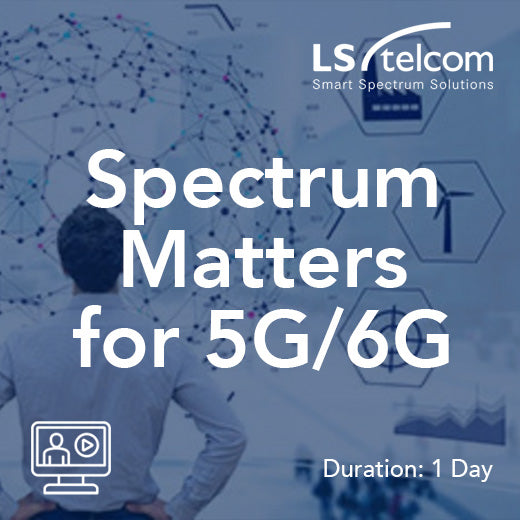
Spectrum Matters for 5G/6G (LS telcom)
5G is driven both by the need for mobile operators to continuously strive to satisfy the growing and unquestionable demand for mobile data, and to support new use cases and services. Regulators and governments have been involved in establishing policies and approaches to award spectrum, so that new 5G services can be rolled out to consumers, enterprises, public sector and government agencies alike. Questions remain about how much more spectrum is needed for 5G but also for what spectrum is needed for 6G which is due for commercialization in the early 2030’s. When it comes to the question of spectrum however, there are many different views about how growth in data traffic impacts upon demand for radio spectrum. It is also evident that below 6 GHz there is very little spectrum remaining that can be re-farmed for mobile services and much of the focus for new spectrum for future mobile (6G) services is concentrated above 6 GHz. How feasible is it to deliver mobile services at such high frequencies? Are there ways to use existing spectrum more efficiently, or are technologies such as LTE and 5G Advanced already very close to the limit of what is achievable? Course Objectives After completing the course, participants will have an understanding of how the evolution towards new standard cellular technologies 5G and 6G has meant identifying new spectrum, or at least one new band. Participants will also understand the practical utilization of ever increasing frequencies in a mobile environment, and whether 6G might mark the end to the hunger of mobile operators for more spectrum. Intended for Those who need to better understand the spectrum implications of 5G and 6G technologies, whether from a regulatory, commercial or technical perspective. Contents Forecasts of demand for data services Realistically forecasting spectrum demand Bands capabilities and issues with existing IMT bands New bands being considered for 5G and 6G services Propagation and coverage of bands above 6 GHz The spectrum efficiency of existing IMT technologies The 5G ecosystem A roadmap for the evolution of 5G services towards 6G Authorization of mobile spectrum About LS telcom: LS telcom is a global leader in technologies and consulting services for efficient radio spectrum use, optimizing spectrum management to ensure reliable, interference-free, and secure radio services. Our portfolio includes consulting, measurement services, and integrated solutions for planning, analysis, monitoring, and managing radio infrastructure. Serving customers in over 100 countries, including regulatory authorities, network operators, and industries such as transport, utilities, and security, LS telcom operates globally with subsidiaries and offices in locations like Germany, the UK, Canada, India, and the UAE. Headquartered in Lichtenau, Germany, LS telcom AG has been listed on the German Stock Exchange since 2001 (ISIN DE 0005754402).
£1,300.00
-

Software Defined Networking (SDN) Training Course
Course Code: IP1502 Course Summary This is a concise course addressing Software Defined Networking (SDN). It begins with a discussion of the drivers towards and the main objectives of SDN, before examining the architecture engineered to support SDN, including a discussion of Network Function Virtualisation (NFV). The deployment of software defined networks is discussed in detail, with significant consideration of switching techniques and SDN in wireless networks, as is the southbound operation of SDN with a focus on OpenFlow. The course also includes information on SDN in transport networks and a key case study looking at Google’s G Scale Network. Who would benefit This course is suitable for those who need a solid base understand of SDN, network virtualisation and the deployment considerations associated with SDN, including network, software and IT engineers, as well as managers and consultants. Prerequisites Delegates should have experience or an understanding of the principles or IP networking and routing. Topic Areas Include SDN Drivers for Change Evolution and Virtualization X as a Service in Layers SDN Goals Introducing SDN Architecture SDN Split Architecture SDN Traffic Engineering Network Functions Virtualization (NFV) and SDN SDN Deployment SDN Architecture SDN Summary SDN Vision Case Study – Google OpenFlow OpenFlow Examples Netconf and YANG SDN to Control Transport Networks Case Study – Mininet
POA: Closed Course
-

Software Defined Networking (SDN) (On-Demand)
This is a concise course addressing Software Defined Networking (SDN). It begins with a discussion of the drivers towards and the main objectives of SDN, before examining the architecture engineered to support SDN, including a discussion of Network Function Virtualisation (NFV). The deployment of software defined networks is discussed in detail, with significant consideration of switching techniques and SDN in wireless networks, as is the southbound operation of SDN with a focus on OpenFlow. The course also includes information on SDN in transport networks and a key case study looking at Google’s G Scale Network. Who would benefit This course is suitable for those who need a solid base understand of SDN, network virtualisation and the deployment considerations associated with SDN, including network, software and IT engineers, as well as managers and consultants. Prerequisites Delegates should have experience or an understanding of the principles or IP networking and routing. Topic Areas Include SDN Drivers for Change Evolution and Virtualization X as a Service in Layers SDN Goals Introducing SDN Architecture SDN Split Architecture SDN Traffic Engineering Network Functions Virtualization (NFV) and SDN SDN Deployment SDN Architecture SDN Summary SDN Vision Case Study – Google OpenFlow OpenFlow Examples Netconf and YANG SDN to Control Transport Networks Case Study – Mininet
£500.00
-
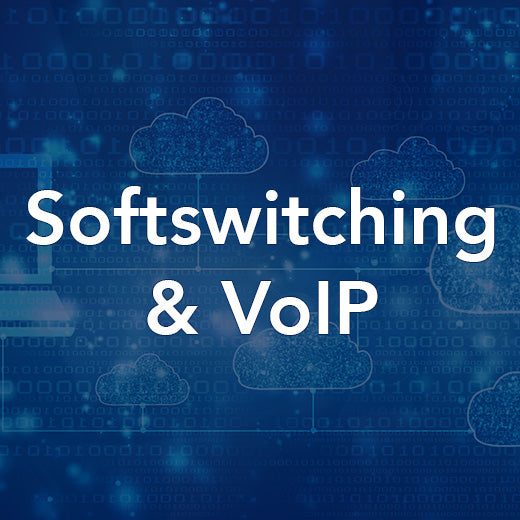
Softswitching and VoIP
Course Code: IP2001 Course Summary Covering Voice over IP (VoIP) services in fixed and mobile, Next Generation Networks (NGNs) and all IP-based networks, the course also includes VoIP concepts, supporting architectures, interworking with circuit-switched networks together with QoS issues. Who would benefit Those requiring an overview of how voice may be integrated into IP networks. Prerequisites Familiarity with IP and intranet operation is beneficial. This can be obtained from attendance on the TCP/IP (QS2501) course. Topic Areas Include Supporting VoIP in fixed and mobile NGNs Protocols for VoIP Voice quality, quality measurements and quality reports Session Initiation Protocol (SIP) Session Description Protocol (SDP) SIP Peer-to-Peer operation SIP architecture User Agent clients and servers Registrar, Proxy and Redirect Servers Back-to-Back User Agents SIP Requests, Responses and Header analysis Demonstrations with analysis of Registration/Authentication and VoIP session-handling procedures ENUM, NAT, STUN and TURN H.248/Megaco Includes practical demonstrations.
POA: Closed Course
-

SMS Messaging
This course develops a rounded understanding of SMS technology, its operations, and the challenges it presents. After exploring the SMS ecosystem, from mobile network infrastructure to message routing, we delve into the fundamental principles of SMS operation, and the various protocols and standards that govern it. We include the different types of SMS service and overall operation - from message origination to final receipt. We then delve into the challenges and vulnerabilities associated with SMS messaging – building an understanding of the common issues, such as spam, fraud, and security threats. We discover effective strategies to mitigate these risks and protect the integrity of SMS communication. By the end of this course, you will have a solid foundation of SMS messaging. Who Would Benefit The course is intended for engineers and other staff who are involved with SMS messaging or systems that use messaging to deliver services – or those who need to understand messaging in order to help combat fraud Prerequisites An telecoms background with some general knowledge of cellular networks and services would be an advantage Course Contents Foundation for SMS SMS Operation SMS – Issues, Fraud, and Mitigation
POA: Closed Course
-
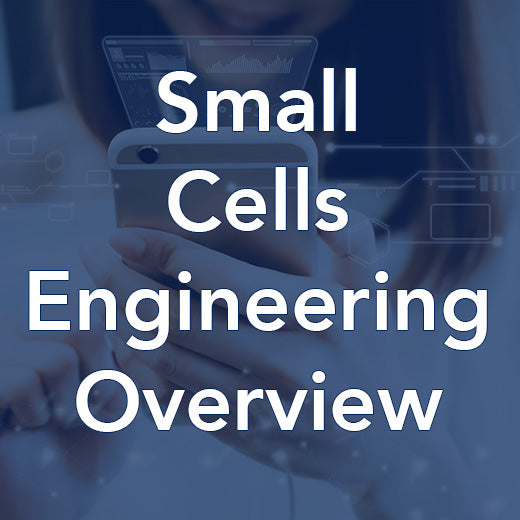
Small Cells Engineering Overview
Course Code: LT1311 Course Summary This course provides a detailed overview of the technologies and techniques employed by Small Cell deployments. It describes the drivers for small cells in a heterogeneous network and identifies the various interfaces, protocols, security functions and network architectures. The features of Self Organising Networks (SON) are described and small cell backhaul techniques are explored. The course concludes with an overview of the future evolution of small cell technologies. Who would benefit This course is suitable for engineering and technical management staff who require a technical overview of the protocols, architectures, standards and configuration considerations related to small cell technologies. Prerequisites Attendance on this course assumes basic cellular telecoms experience but this is not a necessity. Topic Areas Include Mobile Network Generations and Evolution Small Cells Definition The Small Cells Forum Small Cell Applications Associated Technologies and Developments Small Cell Network Architectures Heterogeneous Networks 3G HNB, 4G HeNB Architecture Closed Subscriber Groups Small Cell network architecture, components and interfaces Small cells in the enterprise SON (Self Organizing Networks) Small Cell SON Functions Automatic small cell initialization and configuration Small Cell Backhaul Requirements Wireline and Wireless Backhaul Solutions Broadband-based Backhaul Carrier Ethernet Security, Synchronization, QoS and Reliability Techniques Technology Roadmap for Small Cells LTE-Advanced Small Cells Interworking with Wi-Fi Future developments
POA: Closed Course
-
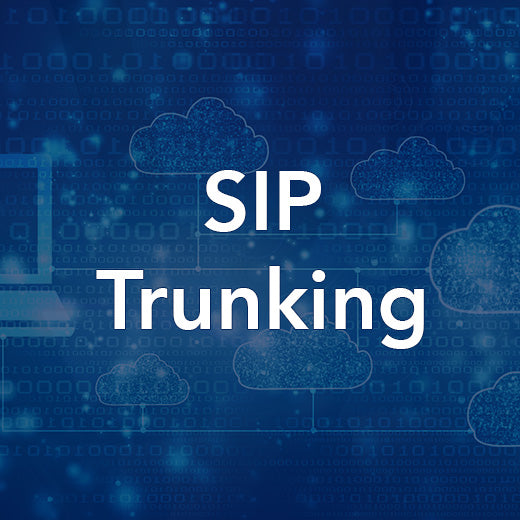
SIP Trunking
Course Code: MB1305 Course Summary This half-day course uses real business cases throughout to discuss the lead up to the employment of SIP Trunking. It includes an overview of carrier scenarios in consideration of all IP infrastructures; a brief look at the standards and a detailed discussion of design considerations, including authentication; transcoding; session management; SIP interworking; pitfalls and security considerations. Who would benefit This course is for engineers who wish to understand the market forces behind the growing use of SIP Trunking, explained through real-life examples. Attendees should also have an interest in the standard governing SIP Trunking – SIP Connect, as well as the design options available from a carrier/telco’s perspective. Prerequisites Although there are no specific prerequisites for this course, delegates should have a basic understanding of SIP and a keen interest in understanding the drivers behind SIP Trunking. Topic Areas Include Why SIP trunking? Customer scenarios Carrier scenarios Technical Standards Design options
POA: Closed Course
-
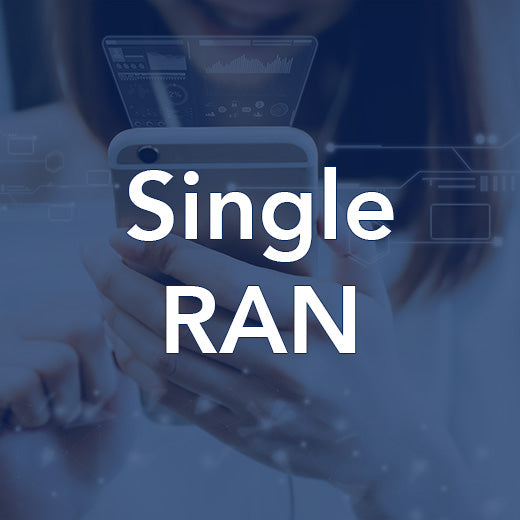
Single RAN
Course Code: LT1203 Course Summary The advent of technologies such as SDR (Software Defined Radio) and packet-based backhaul have enabled vendors and operators to develop ‘Single RAN’ concepts in which MSR (Multi-Standard Radio) base stations are capable of managing 2G, 3G and even 4G cells from within a single base station unit. Shared IP-based backhaul via an Ethernet packet network further allows for the traditional multi-RAN concept to be abandoned as Single RAN architectures begin to be deployed. This course provides a detailed overview of the Single RAN concept, of the technologies and techniques that enable it and of the architectures and deployment options that have made it a reality. Who would benefit This course is designed for engineers, managers and other personnel who have a need to acquire a technical overview of the Single RAN concept and of the technologies and techniques that enable it. Prerequisites An understanding of 2G, 3G and/or 4G access network architectures and technologies would be an advantage as would a basic knowledge of IP. Topic Areas Include Defining the single RAN Potential benefits and dangers of single RAN implementation MSR base stations Software defined radio Multi-standard band sharing OBSAI and CPRI Localized versus distributed cell sites MSR base Station sharing Potential RF issues Single RAN architecture Backhaul networks and architectures for single RAN Multi-RAT operation Flexible core network connectivity Network area coordination RSFP index and idle mode mobility Connected mode mobility IP flow mobility Multi RAN architecture Single RAN architecture Single RAN implementation example
POA: Closed Course
-
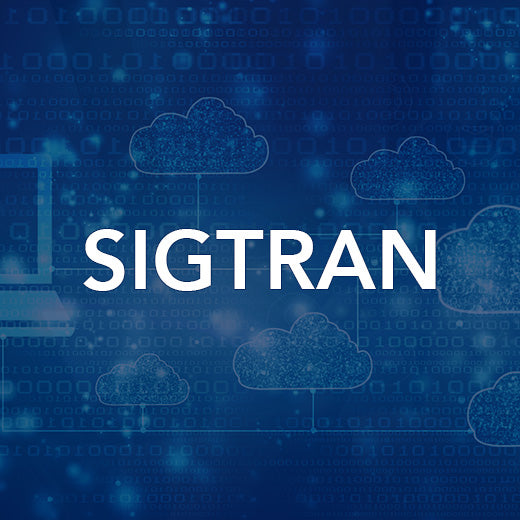
SIGTRAN
Course Code: QS2600 Course Summary The drive towards all-IP networking necessitates the transport of SS7 protocols over an IP domain. This course provides a thorough explanation of how this is achieved using the SIGTRAN ‘toolkit’. Who would benefit Those requiring an understanding of the need for SS7 and the solutions available for transporting SS7 signalling over IP-based networks. Prerequisites Familiarity with the PSTN architecture and SS7 signalling protocols, particularly MTP and SCCP, together with some knowledge of the TCP/IP protocol suite. Topic Areas Include Why SIGTRAN? Potential SS7 and IP interworking scenarios SIGTRAN protocols SIGTRAN in circuit-related and non-circuit-related signalling scenarios Stream Control Transmission Protocol (SCTP) SCTP architecture, operation, procedures and terminology MTP2 Peer-to-Peer Adaptation (M2PA) layer MTP3 User Adaptation (M3UA) layer MTP2 User Adaptation (M2UA) layer SCCP User Adaptation (SUA) layer Adaptation layer architecture, operations, procedures and resilience models Analysis of SIGTRAN operation using Wireshark
POA: Closed Course
-
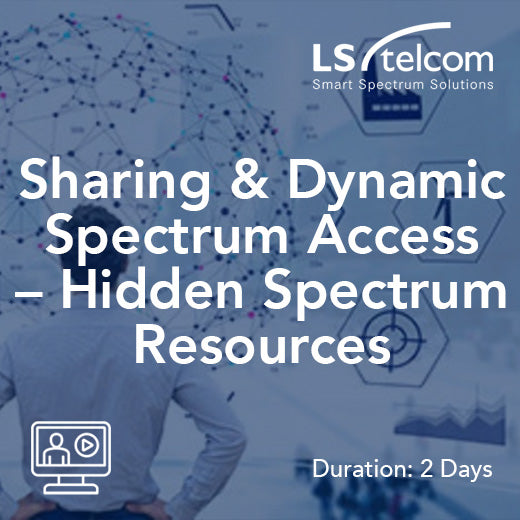
Sharing and Dynamic Spectrum Access – Hidden Spectrum Resources (LS telcom)
The planning rules for radio services often leave small gaps which cannot be used or the scattered use of spectrum by a primary user leaves larger opportunities. Such spectrum might be accessible for different or additional radio services, typically ones with very low power which will not cause undue interference to the primary users. These opportunities were referred to as ‘whitespaces’ but the focus more recently considers methods such as dynamic spectrum assignment. In addition, regulatory techniques are trying to find ways to make sharing spectrum a more common practice for use across a myriad of spectrum services. This course examines the background to whitespaces, considering how and where they arise and looks at a range of sharing opportunities. It then focuses on how spectrum might be made available to additional parties, and what kind of communications it might support. Finally, the various regulatory methods and technologies (including DSA/LSA and the role of databases) being considered will be examined. Course Objectives After completing the course, delegates will understand the history of whitespaces, and the more recent opportunities for sharing together with methods to regulate usage. Current developments and case studies will also be provided. Intended for those who need to understand the regulation and practical application of advanced sharing techniques, whether from a regulatory or commercial perspective. Contents The possible applications for more advanced spectrum sharing methods Technologies being developed for the exploitation spectrum sharing Where are there opportunities for more advanced sharing? How is interference dealt with The regulatory processes and procedures being applied Geographic databases and dynamic spectrum access Licensed shared access and similar regulatory tools About LS telcom: LS telcom is a global leader in technologies and consulting services for efficient radio spectrum use, optimizing spectrum management to ensure reliable, interference-free, and secure radio services. Our portfolio includes consulting, measurement services, and integrated solutions for planning, analysis, monitoring, and managing radio infrastructure. Serving customers in over 100 countries, including regulatory authorities, network operators, and industries such as transport, utilities, and security, LS telcom operates globally with subsidiaries and offices in locations like Germany, the UK, Canada, India, and the UAE. Headquartered in Lichtenau, Germany, LS telcom AG has been listed on the German Stock Exchange since 2001 (ISIN DE 0005754402).
£1,300.00




























































